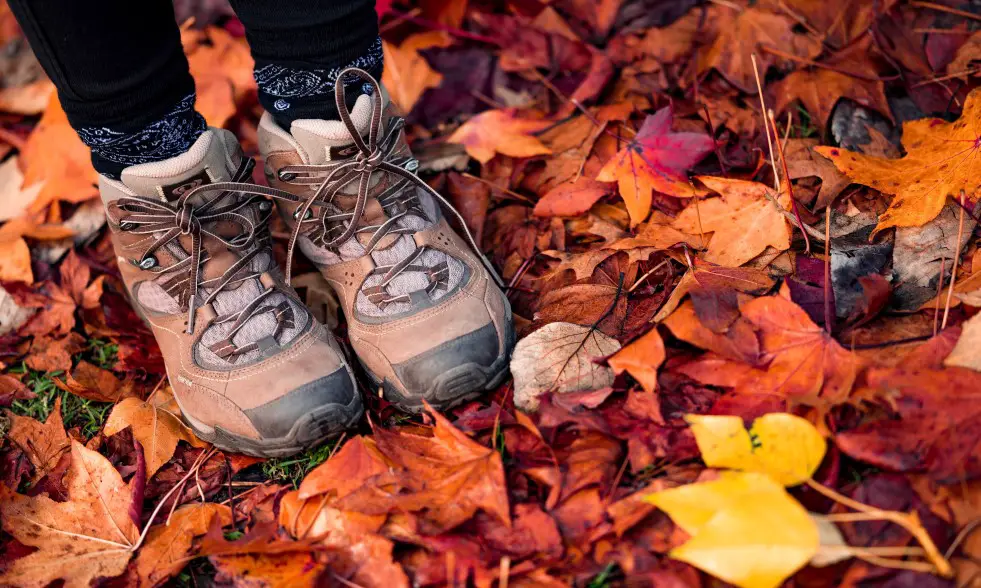How to Tell if Hiking Boots are Too Big


If you are looking for help deciding if your boots are too big they must be pretty close. Hopefully, the information I put together will help you figure it out. If you still aren’t sure, feel free to post a comment and I’ll try to help.
Your Boots Might Be Too Large If:
- You lace them all the way up tightly but your foot still can shift side-to-side or forward-and-back. Your boot shouldn’t squeeze your foot too hard but it should be snug around everything except your toes.
- You are getting a blister on your heel. There is some adjustment that happens to break in your unique heel shape as you break in boots but if you keep getting a heel blister that can be a sign you need the next smaller available size.
- Toe pain going downhill. Which, rather annoyingly, can also be a sign that your boots are too small. If your foot gradually shifts forward on a prolonged downhill hike until your toes push into the front of your boot then your foot has too much space across the bridge and ankle.
- You can’t get the ankle support you are looking for with laces tight. An exception on this might be if you have really scrawny lower legs. In that case, you might have to try several different manufacturers and models to find an option that works for you.

Common Questions:
Question: Should You Go Up a Size in Hiking Boots?
Answer: Maybe. Factors to consider are how long you are hiking. Boots just for an hour or two and for camping no. If you are going to be hiking for hours multiple days in a row foot swelling is more of a factor. A full size is a bit much but a half might be in order.
Question: How much room should you have in hiking boots?
Answer: You want your heel to be held in place without shifting and much open air gaps around the sides of your foot. You should be able to wiggle your toes without them touching the front inside.
Question: What can I do if my boots are too big?
Answer: You need to get a new pair. If you are in the unfortunate position of finding this out a third of the way to Havasupai, here are a few things to attempt.
- Put on an extra pair of socks. The extra padding should help a little particularly around the parts of your foot other than the bottom which will simply compress.
- Try tightening those laces up some more. Sometimes extra effort can pull in a particular area that gives you trouble.
- Any other clever idea to add some volume to your foot. Maybe try out strategic placement of the pads from a blister kit, etc.
Question: Will my feet swell on long hikes and make boots that are bigger OK?
Answer: Maybe. Some people’s feet swell and some don’t. There are rumors that people with jobs that involve a lot of standing and walking already experience less swelling than other occupations. The best bet is to buy boots that as fit as well as possible and learn the fun way on adventures.
Question: I’m getting a rub spot on the back of my lower leg. Does that mean they are too big?
Answer: Probably not. The shape of boot uppers are usually flexible enough that they will conform to your leg shape by the end of a break in process. If they don’t, it is probably a sign that the model is wrong for you rather than the size.
Question: How much room should be at the end of hiking boots?
Answer: Not much. Just enough that you should be able to wiggle your toes without them rubbing the end even if you stand on a downward slope. That stated, make sure when you stand on downward slope your foot isn’t sliding forward much at all. If it is, your boots are too big, poorly tied, or you need a different model for your foot shape.
A final consideration. It’s possible that you bought the wrong kind of boot. There are a class of hiking boots that are very rigid for high-alpine climbing. Awesome boots! However, not a good choice at all for a long hike in non-alpine territory where you cover a lot of distance each day.
